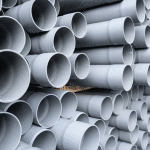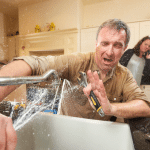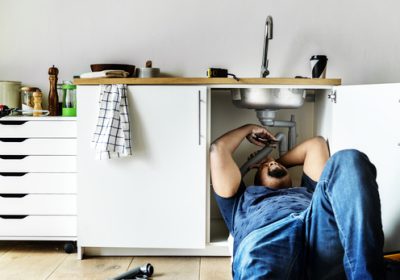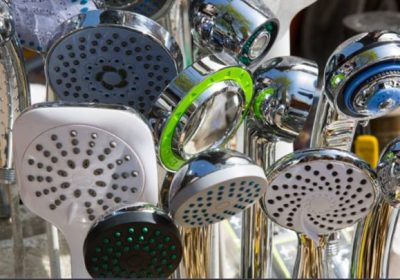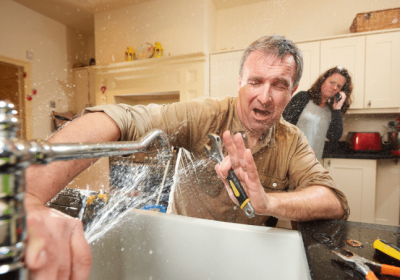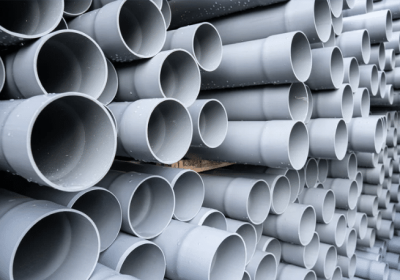How to Prevent and Deal with Frozen Pipes During Winter
As winter sets in, homeowners face a familiar adversary: the freezing of water pipes. This common issue can lead to burst pipes and significant water damage, wreaking havoc on both the structure and the tranquility of your home. Understanding why pipes freeze and the resulting challenges can help you take proactive measures to prevent such mishaps. Let’s delve into how you can safeguard your plumbing this winter season.
1. Understanding Frozen Pipes
What Causes Pipes to Freeze?
Pipes freeze when water inside them expands as it turns to ice. This expansion can exert pressure over 2000 pounds per square inch, which can rupture the pipe. The rupture typically happens not where the ice forms but between the freeze and a closed tap.
Conditions That Increase the Risk
Pipes are more likely to freeze in inadequately insulated areas or where the heat doesn’t reach. Factors such as sudden drops in temperature, poor insulation, and thermostats set too low exacerbate the risk.
Identifying Vulnerable Pipe Locations
Commonly, pipes in attics, garages, and along exterior walls are the most vulnerable. These areas are less likely to be insulated properly or to have stable temperature control, which can lead to frozen pipes.
2. Preventive Measures to Avoid Frozen Pipes
Insulation of Pipes
Insulating your pipes is a primary defense against freezing. Foam rubber or fiberglass sleeves can be purchased from any hardware store and are easy to install. Here’s how you can do it:
- Measure your pipes and cut the insulation to size.
- Wrap the insulation around the pipes, ensuring there are no exposed parts.
- Secure the insulation with duct tape if necessary.
Sealing Leaks and Drafts
Examine your home for any leaks or drafts, especially near plumbing. Use caulking or weather-stripping to seal these leaks. By keeping the cold air out, you significantly reduce the risk of frozen pipes.
Keeping the Heat On
Maintain a consistent temperature in your home. It’s recommended to keep your thermostat set to at least 55 degrees Fahrenheit, even if you are away. The cost of a slightly higher heating bill is negligible compared to the potential damage from burst pipes.
3. Practical Tips During Cold Spells
Letting Taps Drip
Allow a slight drip from your taps during extreme cold. The theory here is that running water, even at a trickle, can prevent water from freezing. It’s a simple yet effective way to keep water moving through the pipes.
Opening Cabinet Doors
Open cabinet doors under sinks, especially if they are located on exterior walls. This allows the warmer air from your home to circulate around the plumbing, helping to keep it from freezing.
Proper Use of Heating Tape or Cables
For extremely vulnerable pipes, electric heating tapes or cables wrapped around the pipes can provide enough warmth to prevent freezing. Follow the manufacturer’s instructions closely to avoid creating fire hazards.
4. Emergency Measures if Pipes Freeze
How to Thaw Frozen Pipes Safely
If you discover a frozen pipe, you can attempt to thaw it using a hair dryer or heat lamp. Begin near the tap and work your way down to the coldest part of the pipe. Never use an open flame as it poses a serious fire risk.
When to Call a Professional
If you can’t locate the frozen section, if the area is not accessible, or if the pipe has burst, call a professional plumber immediately. Sometimes the expertise and equipment they bring are necessary to solve the problem without further damage.
5. Long-Term Solutions and Maintenance
Upgrading Insulation in Key Areas
Consider adding additional insulation to your home, not just around the pipes. Ensuring your attic, basement, and walls are well-insulated will maintain higher temperatures within and prevent many freezing issues.
Regular Plumbing Maintenance
Schedule an annual inspection of your plumbing system. A professional can spot potential problems and fix them before the winter sets in, offering peace of mind throughout the colder months.
Taking proactive steps to prevent frozen pipes can save you from the inconvenience and costs associated with burst plumbing. By understanding the risks, properly insulating and maintaining your home, and knowing when to call in the experts, you can ensure that your winter is as comfortable and worry-free as possible.
Preventive Tips for Frozen Pipes:
- Insulate Pipes: Wrap pipes in unheated areas with insulation foam or tape to prevent freezing.
- Seal Leaks: Use caulk or foam to seal leaks that allow cold air inside near where pipes are located.
- Let Faucets Drip: Keep a trickle of water flowing through faucets connected to pipes that run through unprotected spaces.
Actions to Take if Pipes Freeze:
- Thaw Pipes Safely: Use a hair dryer or heat lamp to thaw frozen pipes, starting from the faucet end and working towards the coldest section.
- Keep Cabinet Doors Open: During extreme cold, keep cabinet doors under sinks open to allow warm air to circulate around the plumbing.
- Call a Professional: If you can’t thaw the pipes or if they have burst, immediately call a plumber for expert assistance.
FAQ Section
Q: What is the best insulation for pipes? A: Foam rubber and fiberglass sleeves are both excellent options for insulating pipes. They are effective, easy to install, and readily available at hardware stores.
Q: How do I know if my pipes are frozen? A: A tell-tale sign is when no water comes out of your tap, or if frost is visible on the pipes. An odd clanking noise when you turn the tap on can also indicate that your pipes might be frozen.
Article suggested by Refined Plumber Sunshine Coast
More Plumbing Reading:
- Understanding Your Home’s Plumbing System: An Essential Guide for Homeowners
- Top 10 Common Plumbing Problems in Homes and How to Fix Them
- Eco-Friendly Plumbing Solutions: Saving Water and Money
- The Pros and Cons of Different Types of Pipe Materials In Your Home Plumbing
- How to Prevent and Deal with Frozen Pipes During Winter
- DIY Plumbing: What You Can Fix and When You Need a Professional
- Modern Innovations in Plumbing Technology for Homes


